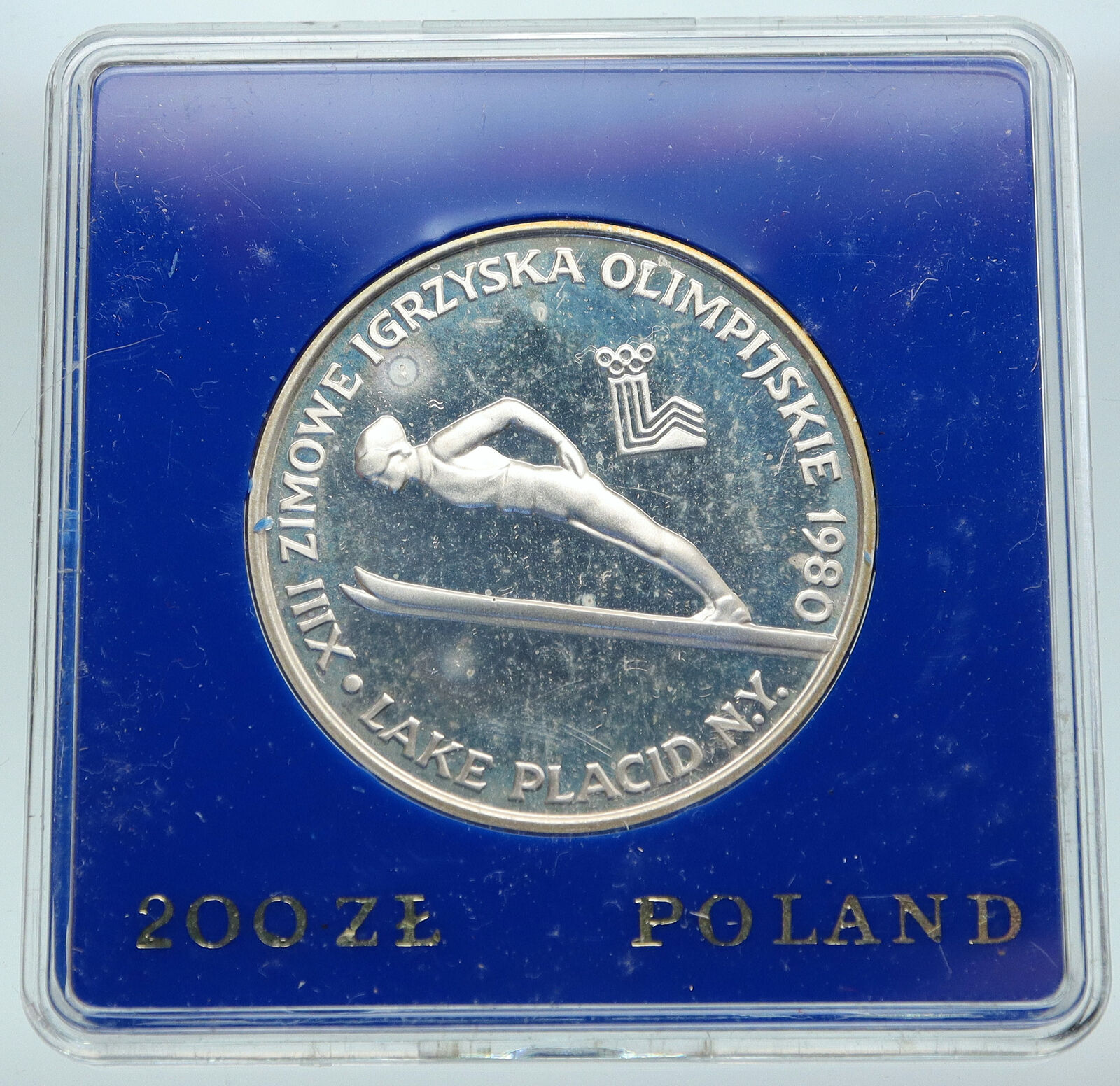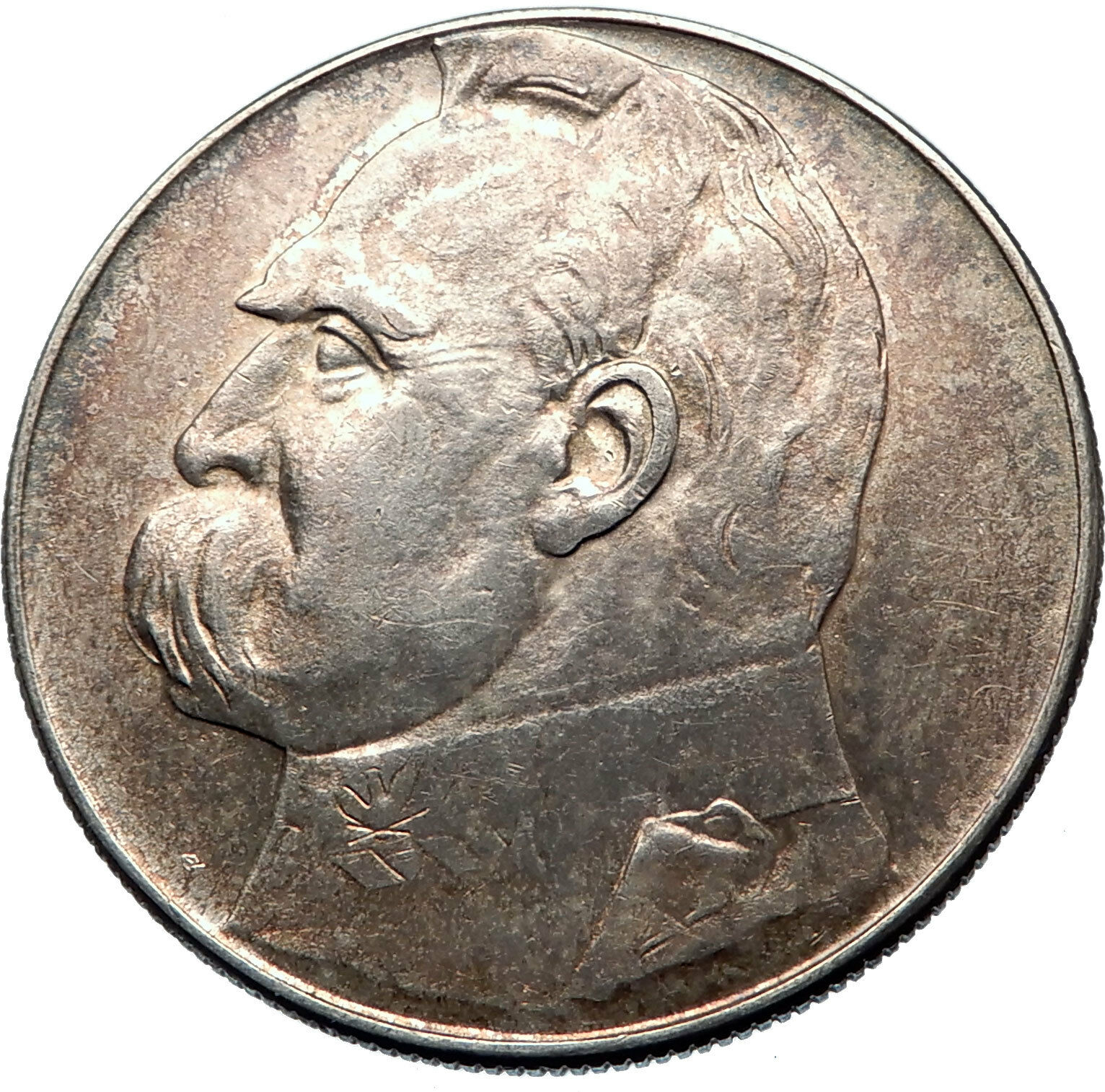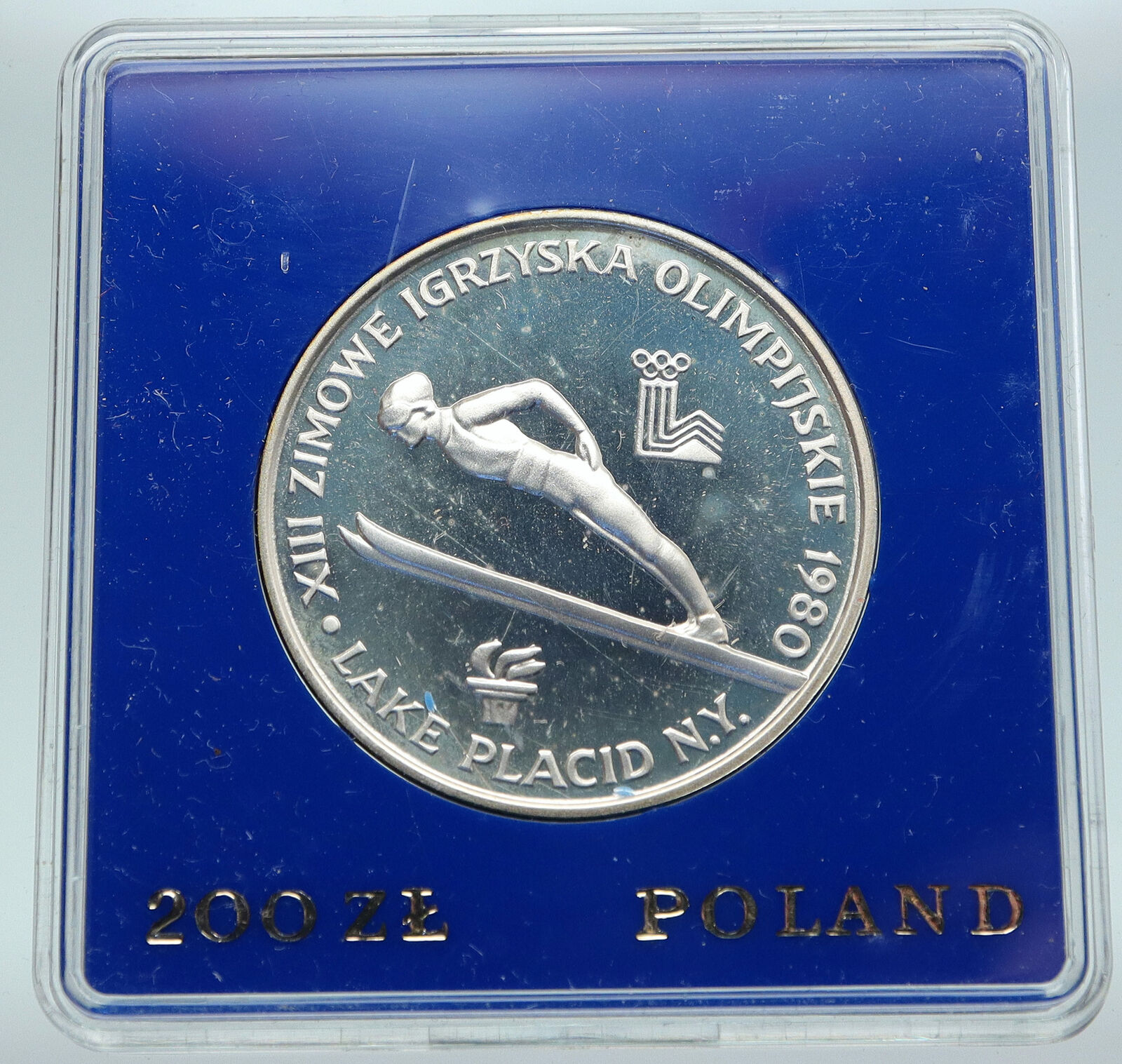|
Poland
Alexander I Jagiellon – King: 12 December 1501 – 19 August 1506
1501-1506 Silver Grosze 21mm (2.30 grams)
Reference: Cf Kop#389
ALEXANDER DEI G REX
MONETA REGIS POLONIE, Crown within circle, cross atop.
You are bidding on the exact item pictured, provided with a Certificate of Authenticity and Lifetime Guarantee of Authenticity.
Alexander Jagiellon (Polish: Aleksander Jagiellończyk, Belarusian: Аляксандар Ягелончык, Lithuanian: Aleksandras Jogailaitis; 5 August 1461 – 19 August 1506) of the House of Jagiellon was the grand duke of Lithuania and later also king of Poland. He was the fourth son of Casimir IV Jagiellon. He was elected grand duke of Lithuania on the death of his father (1492) and king of Poland on the death of his brother John I Albert (1501).
.jpg/220px-Goraj_Miracle_of_Saint_Simeon_Stylites_(detail).jpg) Alexander was born as the fourth son of King Casimir IV of Poland and Elisabeth, daughter of the King Albert of Hungary. At the time of his father’s death in 1492, his eldest brother Vladislaus had already become king of Bohemia (1471) and Hungary and Croatia (1490), and the next oldest brother, Casimir, had died (1484) after leading an ascetic and pious life in his final years, resulting in his eventual canonization. While the third oldest brother, John I Albert was chosen by the Polish nobility (szlachta) to be the next king of Poland, the Lithuanians instead elected Alexander to be their next grand duke. Alexander was born as the fourth son of King Casimir IV of Poland and Elisabeth, daughter of the King Albert of Hungary. At the time of his father’s death in 1492, his eldest brother Vladislaus had already become king of Bohemia (1471) and Hungary and Croatia (1490), and the next oldest brother, Casimir, had died (1484) after leading an ascetic and pious life in his final years, resulting in his eventual canonization. While the third oldest brother, John I Albert was chosen by the Polish nobility (szlachta) to be the next king of Poland, the Lithuanians instead elected Alexander to be their next grand duke.
The greatest challenge that Alexander faced upon assuming control of the grand duchy was an attack on Lithuania by Grand Duke Ivan III of Russia and his allies, the Tatars of the Crimean Khanate, which commenced shortly after his accession. Ivan III considered himself the heir to the lands of Kievan Rus’, and was striving to take back the territory previously gained by Lithuania. Unable to successfully stop the incursions, Alexander sent a delegation to Moscow to make a peace settlement, which was signed in 1494 and ceded extensive land over to Ivan. In an additional effort to instill a peace between the two countries, Alexander was betrothed to Helena, the daughter of Ivan III; they were married in Vilnius on 15 February 1495. The peace did not last long, however, as Ivan III resumed hostilities in 1500. The most Alexander could do was to garrison Smolensk and other strongholds and employ his wife Helena to mediate another truce between him and her father after the disastrous Battle of Vedrosha (1500). In the terms of this truce, Lithuania had to surrender about a third of its territory to the nascent expansionist Russian state.
On 17 June 1501, Alexander’s older brother John I Albert died suddenly, and Alexander was crowned king of Poland on 12 December of that year. Alexander’s shortage of funds immediately made him subservient to the Polish Senate and szlachta, who deprived him of control of the mint (then one of the most lucrative sources of revenue for the Polish kings), curtailed his prerogatives, and generally endeavored to reduce him to a subordinate position. In 1505, the Sejm passed the Act of Nihil novi, which forbade the king to issue laws without the consent of the nobility, represented by the two legislative chambers, except for laws governing royal cities, crown lands, mines, fiefdoms, royal peasants, and Jews. This was another step in Poland’s progression towards a “Noble’s Democracy”.
During Alexander’s reign, Poland suffered additional humiliation at the hands of her subject principality, Moldavia. Only the death of Stephen, the great hospodar of Moldavia, enabled Poland still to hold her own on the Danube River. Meanwhile, the liberality of Pope Julius II, who issued no fewer than 29 bulls in favor of Poland and granted Alexander Peter’s Pence and other financial help, enabled him to restrain somewhat the arrogance of the Teutonic Order.
Alexander Jagiellon never felt at home in Poland, and bestowed his favor principally upon his fellow Lithuanians, the most notable of whom was the wealthy Lithuanian magnate Michael Glinski, who justified his master’s confidence by his great victory over the Tatars at Kleck (5 August 1506), news of which was brought to Alexander on his deathbed in Vilnius.
Alexander was the last known ruler of the Gediminid dynasty to have maintained the family’s ancestral Lithuanian language. After his death, Polish became the sole language of the family, thus fully Polonising the Jagiellons.
In 1931, during the refurbishment of Vilnius Cathedral, the forgotten sarcophagus of Alexander was discovered, and has since been put on display.
 Poland, officially the Republic of Poland, is a country in Central Europe, bordered by Germany to the west; the Czech Republic and Slovakia to the south; Ukraine and Belarus to the east; and the Baltic Sea, Kaliningrad Oblast (a Russian exclave) and Lithuania to the north. The total area of Poland is 312,679 square kilometres (120,726 sq mi), making it the 69th largest country in the world and the 9th largest in Europe. With a population of over 38.5 million people, Poland is the 34th most populous country in the world, the 8th most populous country in Europe and the sixth most populous member of the European Union, as well as the most populous post-communist member of the European Union. Poland is a unitary state divided into 16 administrative subdivisions. Poland, officially the Republic of Poland, is a country in Central Europe, bordered by Germany to the west; the Czech Republic and Slovakia to the south; Ukraine and Belarus to the east; and the Baltic Sea, Kaliningrad Oblast (a Russian exclave) and Lithuania to the north. The total area of Poland is 312,679 square kilometres (120,726 sq mi), making it the 69th largest country in the world and the 9th largest in Europe. With a population of over 38.5 million people, Poland is the 34th most populous country in the world, the 8th most populous country in Europe and the sixth most populous member of the European Union, as well as the most populous post-communist member of the European Union. Poland is a unitary state divided into 16 administrative subdivisions.
 The establishment of a Polish state can be traced back to 966, when Mieszko I, ruler of a territory roughly coextensive with that of present-day Poland, converted to Christianity. The Kingdom of Poland was founded in 1025, and in 1569 it cemented a longstanding political association with the Grand Duchy of Lithuania by signing the Union of Lublin. This union formed the Polish-Lithuanian Commonwealth, one of the largest and most populous countries of 16th and 17th-century Europe. The Commonwealth ceased to exist in the years 1772-1795, when its territory was partitioned among Prussia, the Russian Empire, and Austria. Poland regained its independence (as the Second Polish Republic) at the end of World War I, in 1918. The establishment of a Polish state can be traced back to 966, when Mieszko I, ruler of a territory roughly coextensive with that of present-day Poland, converted to Christianity. The Kingdom of Poland was founded in 1025, and in 1569 it cemented a longstanding political association with the Grand Duchy of Lithuania by signing the Union of Lublin. This union formed the Polish-Lithuanian Commonwealth, one of the largest and most populous countries of 16th and 17th-century Europe. The Commonwealth ceased to exist in the years 1772-1795, when its territory was partitioned among Prussia, the Russian Empire, and Austria. Poland regained its independence (as the Second Polish Republic) at the end of World War I, in 1918.
 In September 1939, World War II started with the invasions of Poland by Nazi Germany and the Soviet Union (as part of the Molotov-Ribbentrop Pact). More than six million Polish citizens died in the war. In 1944, a Soviet-backed Polish Committee of National Liberation was formed which, after a falsified referendum in 1947 took control of the country and Poland became a satellite state of the Soviet Union, as People’s Republic of Poland. During the Revolutions of 1989 Poland’s Communist government was overthrown and Poland adopted a new constitution establishing itself as a democracy. In September 1939, World War II started with the invasions of Poland by Nazi Germany and the Soviet Union (as part of the Molotov-Ribbentrop Pact). More than six million Polish citizens died in the war. In 1944, a Soviet-backed Polish Committee of National Liberation was formed which, after a falsified referendum in 1947 took control of the country and Poland became a satellite state of the Soviet Union, as People’s Republic of Poland. During the Revolutions of 1989 Poland’s Communist government was overthrown and Poland adopted a new constitution establishing itself as a democracy.
Despite the large number of casualties and destruction the country experienced during World War II, Poland managed to preserve much of its cultural wealth. There are 14 heritage sites inscribed on the UNESCO World Heritage and 54 Historical Monuments and many objects of cultural heritage in Poland.
Since the beginning of the transition to a primarily market-based economy that took place in the early 1990s, Poland has achieved a “very high” ranking on the Human Development Index, as well as gradually improving economic freedom. Poland is a democratic country with an advanced high-income economy, a high quality of life and a very high standard of living. Moreover, the country is visited by nearly 16 million tourists every year (2013), which makes it one of the most visited countries in the world. Poland is the sixth largest economy in the European Union and among the fastest rising economic states in the world. The country is the sole member nation of the European Union to have escaped a decline in GDP and in recent years was able to “create probably the most varied GDP growth in its history” according to OANDA, a Canadian-based foreign exchange company. Furthermore, according to the Global Peace Index for 2014, Poland is one of the safest countries in the world to live in.
|





.jpg/220px-Goraj_Miracle_of_Saint_Simeon_Stylites_(detail).jpg) Alexander was born as the fourth son of King Casimir IV of Poland and Elisabeth, daughter of the King Albert of Hungary. At the time of his father’s death in 1492, his eldest brother Vladislaus had already become king of Bohemia (1471) and Hungary and Croatia (1490), and the next oldest brother, Casimir, had died (1484) after leading an ascetic and pious life in his final years, resulting in his eventual canonization. While the third oldest brother, John I Albert was chosen by the Polish nobility (szlachta) to be the next king of Poland, the Lithuanians instead elected Alexander to be their next grand duke.
Alexander was born as the fourth son of King Casimir IV of Poland and Elisabeth, daughter of the King Albert of Hungary. At the time of his father’s death in 1492, his eldest brother Vladislaus had already become king of Bohemia (1471) and Hungary and Croatia (1490), and the next oldest brother, Casimir, had died (1484) after leading an ascetic and pious life in his final years, resulting in his eventual canonization. While the third oldest brother, John I Albert was chosen by the Polish nobility (szlachta) to be the next king of Poland, the Lithuanians instead elected Alexander to be their next grand duke. Poland, officially the Republic of Poland, is a country in Central Europe, bordered by Germany to the west; the Czech Republic and Slovakia to the south; Ukraine and Belarus to the east; and the Baltic Sea, Kaliningrad Oblast (a Russian exclave) and Lithuania to the north. The total area of Poland is 312,679 square kilometres (120,726 sq mi), making it the 69th largest country in the world and the 9th largest in Europe. With a population of over 38.5 million people, Poland is the 34th most populous country in the world, the 8th most populous country in Europe and the sixth most populous member of the European Union, as well as the most populous post-communist member of the European Union. Poland is a unitary state divided into 16 administrative subdivisions.
Poland, officially the Republic of Poland, is a country in Central Europe, bordered by Germany to the west; the Czech Republic and Slovakia to the south; Ukraine and Belarus to the east; and the Baltic Sea, Kaliningrad Oblast (a Russian exclave) and Lithuania to the north. The total area of Poland is 312,679 square kilometres (120,726 sq mi), making it the 69th largest country in the world and the 9th largest in Europe. With a population of over 38.5 million people, Poland is the 34th most populous country in the world, the 8th most populous country in Europe and the sixth most populous member of the European Union, as well as the most populous post-communist member of the European Union. Poland is a unitary state divided into 16 administrative subdivisions. The establishment of a Polish state can be traced back to 966, when Mieszko I, ruler of a territory roughly coextensive with that of present-day Poland, converted to Christianity. The Kingdom of Poland was founded in 1025, and in 1569 it cemented a longstanding political association with the Grand Duchy of Lithuania by signing the Union of Lublin. This union formed the Polish-Lithuanian Commonwealth, one of the largest and most populous countries of 16th and 17th-century Europe. The Commonwealth ceased to exist in the years 1772-1795, when its territory was partitioned among Prussia, the Russian Empire, and Austria. Poland regained its independence (as the Second Polish Republic) at the end of World War I, in 1918.
The establishment of a Polish state can be traced back to 966, when Mieszko I, ruler of a territory roughly coextensive with that of present-day Poland, converted to Christianity. The Kingdom of Poland was founded in 1025, and in 1569 it cemented a longstanding political association with the Grand Duchy of Lithuania by signing the Union of Lublin. This union formed the Polish-Lithuanian Commonwealth, one of the largest and most populous countries of 16th and 17th-century Europe. The Commonwealth ceased to exist in the years 1772-1795, when its territory was partitioned among Prussia, the Russian Empire, and Austria. Poland regained its independence (as the Second Polish Republic) at the end of World War I, in 1918. In September 1939, World War II started with the invasions of Poland by Nazi Germany and the Soviet Union (as part of the Molotov-Ribbentrop Pact). More than six million Polish citizens died in the war. In 1944, a Soviet-backed Polish Committee of National Liberation was formed which, after a falsified referendum in 1947 took control of the country and Poland became a satellite state of the Soviet Union, as People’s Republic of Poland. During the Revolutions of 1989 Poland’s Communist government was overthrown and Poland adopted a new constitution establishing itself as a democracy.
In September 1939, World War II started with the invasions of Poland by Nazi Germany and the Soviet Union (as part of the Molotov-Ribbentrop Pact). More than six million Polish citizens died in the war. In 1944, a Soviet-backed Polish Committee of National Liberation was formed which, after a falsified referendum in 1947 took control of the country and Poland became a satellite state of the Soviet Union, as People’s Republic of Poland. During the Revolutions of 1989 Poland’s Communist government was overthrown and Poland adopted a new constitution establishing itself as a democracy.




